January 9, 2009
Air Date: January 9, 2009
FULL SHOW
SEGMENTS
Rock Star Science Team
View the page for this story
Barack Obama has selected some of the most accomplished scientists in the United States to lead major departments of the government. Host Steve Curwood talks with Stanford professor Steven Schneider about the newly nominated science advisor, Secretary of Energy, and head of National Oceanic and Atmospheric Association. (06:10)
Jackson’s Job in Jersey
/ Jeff YoungView the page for this story
New Jersey's top environmental officer, Lisa Jackson, is Barack Obama's nominee to lead the Environmental Protection Agency. And the President-elect promises big changes for the agency. But Washington correspondent Jeff Young reports that some New Jersey environmentalists - including some who worked for Jackson - are highly critical of her record there. (05:30)
Industrial Pollution Goes to School
View the page for this story
Parents might be surprised to find that the A-plus school their children attend is getting a failing grade in air quality. USA Today produced a new way of ranking public, private, and parochial schools: proximity to industrial air pollution. Blake Morrison, the principle reporter of the newspaper’s special report, tells host Steve Curwood what's in the air around America's schools. (07:00)
A Sustainable Stimulus
View the page for this story
How will the trillion dollars that’s going to be infused into the economy during the next two years be used? If Parris Glendening has his way, the money will stimulate sustainable equitable growth. Glendening is the president of the Smart Growth Leadership Institute and the former governor of Maryland. He tells host Steve Curwood the money should be invested in green infrastructure, including transportation and walkable communities. (07:30)
Listener Letters
View the page for this story
Living on Earth dips into our mailbag to hear from what listeners have to say. (02:00)
Monumental Marine Move
View the page for this story
With two weeks left in office, President Bush has set aside an area in the Pacific Ocean the size of Texas for conservation. Three separate marine monuments have been created, one of which includes the Marianas Trench, the deepest part of the earth’s surface. Host Steve Curwood gets the update on the blue Bush legacy from Josh Reichert, managing director of the Pew Environment Group which spearheaded efforts to create the Marianas sanctuaries. (06:00)
Bringing Money Down to Earth
View the page for this story
As public officials and individuals seek fast solutions to economic woes, sustainable investor Woody Tasch says now is the perfect time to pursue slow money. Tasch talks with host Steve Curwood about investing in businesses that are good for the planet but slow in financial returns, and about his new book "Inquiries into the Nature of Slow Money." (06:10)
Along Came a Spider
/ Sara HarrisView the page for this story
For some of us black widow spiders are the stuff of story. But for reporter Sara Harris last summer they suddenly became extremely real. (05:00)
Show Credits and Funders
Show Transcript
Host: Steve Curwood
Guests: Parris Glendening, Blake Morrison, Joshua Reichert, Steven Schneider, Woody Tasch
Reporters: Sara Harris, Jeff Young
[THEME]
CURWOOD: From Public Radio International - this is Living on Earth.
[THEME]
CURWOOD: I’m Steve Curwood.
President-elect Obama has assembled a heavy hitting brain trust to advise him on matters of science, and transform the debate in Washington.
SCHNEIDER: I think first of all they’ll change the culture within the government. There’s this knee-jerk 'how much is it going to cost and what are our campaign contributors going to say?' That’s not how John Holdren, or Steve Chu or Jane Lubchenco think.
CURWOOD: But how effective can the new science team be on Capitol Hill?
Plus – a new ranking of schools – by proximity to industrial pollution. And a story to terrify the arachnophobe.
MINERVA: I saw one black widow on the stairs, and another black widow next to my toy kitchen, under the rock. She has eight legs!
CURWOOD: All these stories and more this week on Living on Earth. Stick Around!
[NEWS BREAK]
[Boards Of Canada “Zoetrope” from “In A Beautiful Place Out In The Country” (Warp Records 2000)]
ANNOUNCER: Support for Living on Earth comes from the National Science Foundation and Stonyfield Farm.
Rock Star Science Team

Jane Lubchenco is a professor of marine biology at Oregon State University and a former president of the American Association for the Advancement of Science. (Photo: Denny Wolverton)
CURWOOD: From the Jennifer and Ted Stanley Studios in Somerville, Massachusetts - this is Living on Earth. I’m Steve Curwood.
Not since George Washington could consult with Benjamin Franklin has a U.S. leader had such a star-studded science team as President-elect Barack Obama. Among the leading scientists Obama is presenting for senate confirmation are two Nobel Laureates, two former presidents of the AAAS – that’s the American Association for the Advancement of Science, the director of a national science lab and the credentials go on.
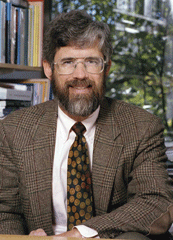
John Holdren shared the 1995 Nobel Peace Prize and is director of the Woods Hole Research Center and a Harvard professor. (Photo: © Martha Stewart)
SCHNEIDER: Thank you, Steve. It’s good to talk to you again.
CURWOOD: Steve, let’s first talk about Dr. John Holdren, Obama’s pick for White House Science Advisor. He’s a Harvard professor of environmental policy and director of the Woods Hole Research Center. And he chaired a group that won the Nobel Peace Prize for nuclear disarmament. Here’s a bit of tape from him talking about climate change.
HOLDREN: I think most people, even most scientists, continue to underestimate how far down the path to climate catastrophe we’ve already traveled. We’re seeing more heat waves. We’re seeing more droughts. Major floods are up all over the world.
CURWOOD: Dr. Holdren sounds pretty strong on climate change. In fact, in the past when I interviewed him about climate change, he said, “No, Steve, it is climate disruption.” What do you think are his strengths and weaknesses?
SCHNEIDER: Well John Holdren’s in my top ten smartest people in the world. There’s no topic in science except in the bio-med area that he doesn’t have a broader view than most of the professionals practicing. So it’s a perfect choice for a science advisor because they don’t need somebody there who’s producing the latest results in the melt rates of the ice in Greenland. They need somebody who sees how that fits into sea level rise and what that does to coastal wetlands. And he’s going to get push back from people saying “Oh, but John, you can’t be sure.” And I know what he’ll say. He says “Well, are you sure your house is going to burn down? You have insurance. We’re not sure who’s going to attack us. We have a trillion dollar military.” And I think he’s going to use exactly those kinds of arguments to try to have us hedge against potentially catastrophic outcomes in the environment. We have to recognize where are the risks and deal with 'em.
CURWOOD: Now let’s talk about Steven Chu next. He’s Barack Obama’s choice for Secretary of Energy. He is a director of the Lawrence Berkeley National Laboratory and also a Nobel Laureate. In this case, he won the Nobel Prize in physics. Let’s listen a moment now to Steven Chu talk about energy issues.

Steven Chu is the Director of the Lawrence Berkely National Laboratory and the 1997 recipient of the Nobel Prize in physics. (Courtesy of Lawrence Berkely National Laboratory)
SCHNEIDER: We’ll Steve Chu is another one of those brilliant intellectuals, and I was actually surprised five years ago when he left us here at Stanford and went over to the dark side to Berkeley. But he did it to run as the administrator for the Lawrence Berkeley National Lab, which is arguably the Mecca of renewable energy, energy efficiency. So, Steve is not just talking the talk, but he’s actually for the last five years walked the walk of being involved daily with people who actually look at renewable energy technology. He’ll be a refreshing change in the Department of Energy, which in the past has often been run by managers. Here you’re going to have a guy with some management experience, but who’s an intellectual first. And I think that’s critical also to be in the cabinet.
CURWOOD: Now let’s talk about Jane Lubchenco, she was president of the AAAS, the American Association for the Advancement of Science.
She was one of the nations leading marine biologists, professor out of Oregon State University now, but she has been tapped to head NOAA, the National Oceanic and Atmospheric Administration. Let’s take a listen to some archive tape of Jane Lubchenco.

Jane Lubchenco is a professor of marine biology at Oregon State University and a former president of the American Association for the Advancement of Science. (Photo: Denny Wolverton)
SCHNEIDER: Jane Lubchenco is again a refreshing change, because NOAA has been headed primarily by administrative types. Now we’re bringing in a world class scientist who also has the value system which says 'nature matters too.' It’s not just about improving the economy. Remember, NOAA sits in the Department of Commerce. So, the people at the top always have the 'what’s it gonna do for the economy?' point of view. Jane is gonna bring in 'but what is it doing to the environment at the same time?'
CURWOOD: So, Professor Schneider, look into your crystal ball now, and what do you see in that ball of what this group of people will have been able to accomplish over the next four or eight years?
SCHNEIDER: I think first of all they’ll change the culture within the government.. There’s this knee jerk 'how much is it going to cost and what are our campaign contributors going to say?' That’s not how John Holdren, or Steve Chu or Jane Lubchenco think. They think, 'what’s it going to do to species? How is it going to lower the price of solar or wind or make nuclear safer?' It’s going to take them probably the better part of the first administration to get that cultural change. It’s a terrific set of choices, but they will have their hands full trying to change the culture in Washington D.C.
CURWOOD: Steven Schneider is a professor of biology at Stanford University. He’s also co-director of the Center for Environmental Science and Policy at Stanford. Thank you so much, Steve.
SCHNEIDER: Thanks, Steve. It’s always good to talk to you.
Related links:
- For more on Jane Lubchenco, click here
- Learn more about Steven Chu from the Lawrence Berkeley National Laboratory
- Click here to find out more about John Holdren
Jackson’s Job in Jersey
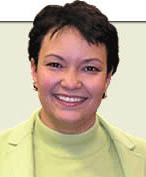
Lisa Jackson (Courtesy of the New Jersey DEQ)
CURWOOD: The confirmations of that team of scientists, John Holdren, Steven Chu and Jane Lubchenco are expected to move smoothly through the Senate.
But it may not be so simple for Barack Obama’s pick for EPA administrator, Lisa Jackson. The woman who would become the first African American head of the Environmental Protection Agency has drawn criticism from some in New Jersey about her performance as that state’s top environmental officer. Living on Earth’s Jeff Young reports.
YOUNG: When President elect Obama introduced Lisa Jackson as his nominee to lead the Environmental Protection Agency, Jackson gave five reasons she wanted job.
JACKSON: As an environmentalist, as a public servant as a native New Orleanian and a as New Jerseyan, and most importantly as a mother, there is no higher calling for me than to lead this vital agency at this vital time.
YOUNG: Jackson’s a chemical engineer with 20 years experience in environmental regulation at the state and federal levels. She worked in EPA’s Superfund program for toxic waste cleanups in the 1990s and led New Jersey’s Department of Environmental Protection for the past 3 years. Jackson grew up in the Lower Ninth Ward of New Orleans, a place that still holds importance for her. She told NJN Public Broadcasting in New Jersey that her parents lost their home to Hurricane Katrina.
JACKSON: I happened to be there by chance; my Mom’s birthday is a few days prior. And we actually evacuated on her birthday August 27th. As sad as New Orleans is and it’s a tragedy I think, one thing it did do is raise awareness.
YOUNG: When Jackson accepted the top environmental job in New Jersey, her parents heard her eloquent speech about the “shameful failures of government” after the storm that renewed her commitment to protecting the public. Under her watch, the state cracked down on some scofflaw polluters and strengthened waterway protections.
New Jersey Sierra Club director Jeff Tittel praised Jackson, especially for her work on climate change.
TITTEL: Lisa Jackson was the person who really got our Global Warming Response Act passed. She was the person who convinced our governor, who originally opposed the bill, to support the bill, and if we get this plan implemented it will be a leader in the country on wind and solar power.
YOUNG: The state plans to reduce carbon emissions 80 percent by mid century. Other state environmentalists, however, don’t rate Jackson very highly. Bob Spiegel directs the Edison Wetlands Association, which focuses on New Jersey’s thousands of highly toxic waste sites.
SPIEGEL: Anyone that tells you she had done a good job in New Jersey and she should be promoted to leading the environmental protectorate for the United States, they’re just not being honest. I would say Ms. Jackson got a D.
YOUNG: Spiegel says even the Bush administration’s EPA criticized the state for poorly managing its Superfund sites. He says his group had to file federal suit to stop a flagrant polluter because he couldn’t persuade Jackson to take action. And Spiegel faults Jackson in one of the state’s most infamous contamination cases. A daycare center called Kiddie College operated on the former grounds of a thermometer factory that was tainted with mercury, a powerful neurotoxin.
SPIEGEL: Even though DEP was made aware of the fact that children were being exposed in this former thermometer factory it took Lisa Jackson four months to notify families and parents of the children that they were being exposed to very high levels of mercury.
YOUNG: Jackson admitted that her agency shared some of the blame for the contaminated daycare center. And the state later passed a bill to prevent such reuse of contaminated sites.
Jackson also faces criticism from some who worked for her in New Jersey. One scientist resigned because she felt Jackson had ignored science about the carcinogen chromium. Jeff Ruch directs PEER, Public Employees for Environmental Responsibility, which compiled a list of worker complaints about Jackson. Ruch says they’re similar to complaints he hears from federal employees at the Bush EPA.
RUCH: Retaliation against whistleblowers, marginalization of science, a penchant for secrecy. If that’s the management style she brings to EPA it will not be the change we need.
YOUNG: Ruch points to the case of whistleblower Dennis Zannoni. Zannoni was the agency’s top nuclear energy official. When he raised concerns about the safety of the Oyster Creek facility—the oldest nuclear power plant in the country—he soon found himself off the nuclear beat.
ZANNONI: One day, January 30, 2007, I was removed without reason from my position as chief nuclear engineer and pretty much put in a broom closet in the department. And it’s been like that for two years.
YOUNG: Jackson’s defenders say her critics don’t understand the political constraints Jackson faced, working for a governor who did not make the environment a priority. Ruch at PEER says it’s important that the senators considering the next EPA administrator at least ask Jackson to defend her record.
RUCH: We know it’s somewhat impolitic for us to be questioning an Obama nomination. At this time, particularly someone who would be the first African-American head of EPA. So, to some extent, we are the skunk at the garden party.
YOUNG: Key members of the Senate’s environment committee support Jackson, but say they will ask some tough questions. Democrat Frank Lautenberg is New Jersey’s senior senator.
LAUTENBERG: She works very hard; she’s knowledgeable. Now we’re going to be talking to her and we’re going to review some of the concerns that have been expressed but based on the information that we have to date she looks like a really good person for that job.

Lisa Jackson (Courtesy of the New Jersey DEQ)
EPA. Obama is creating a new White House position to oversee global warming and energy issues—possibly reducing EPA’s clout on those important questions.
Most observers predict easy confirmation for Jackson. But the flurry of criticism shows some are uneasy about whether Obama’s pick for the EPA will bring real change to the struggling agency.
For Living on Earth, I’m Jeff Young in Washington.
[Big Bang “Spiral Waltz (Indigo jam Unit Mix) from Essential Selection (Arision Records 2006)]
CURWOOD: Just ahead – reading -- writing –- 'rithmatic and …… really toxic air? Keep listening to Living on Earth!
Related links:
- Obama’s transition team on Jackson’s nomination to lead EPA
- PEER’s questions for Jackson
- Read about the Sierra Club New Jersey chapter’s support of Jackson
[Wave Mechanics Union: “Heart Of The Sunrise” from Second Season (HX Music 2008)]
Industrial Pollution Goes to School
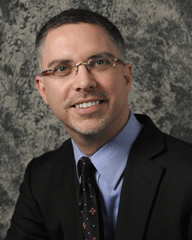
USA Today reporter Blake Morrison.
CURWOOD: It’s Living on Earth, I’m Steve Curwood.
Before sending their children off to a new school, parents often check the school's rankings -- average test scores, graduation rates, class sizes. After all, children's minds are like sponges -- the better their education, the more they’ll learn.
Well, children's bodies are also like sponges -- they breathe in more air proportionally than adults, leaving their developing organs more vulnerable to the effects of airborne toxic chemicals. With this is mind, USA Today recently spent eight months developing a new school ranking: proximity to industrial air pollution.
Blake Morrison was the principal reporter on the newspaper’s special series, "The Smokestack Effect." He joins me now - Mr. Morrison, welcome to Living on Earth.
MORRISON: Thanks, Steve.
CURWOOD: So you looked at some 128,000 public, private and parochial schools. You looked to see how they rank on industrial air pollution. Tell me, what did you find? Where are America’s most toxic schools?
MORRISON: Well one of the things that really was intriguing to us was that the data we used, the model that the EPA developed creates essentially a ranking system. And one of the things that it does is it prioritizes one site against another. So it really gives you a true comparison between two places. What it doesn’t do is allow you to assess the risk at those particular locations. But what we found was a school outside of Cincinnati, Ohio that was shut down about three years ago after the Ohio EPA did long term monitoring there. And they found there that the risk of cancer was about fifty times what the state considered acceptable. We found that that school ranked about 435 out of the 128,000 or so schools we looked at. Which meant that there were about 430 some schools where the model predicted that the air was actually worse than the school that was shut down in Ohio.
CURWOOD: Let’s listen to a clip of some video that you made. A newspaper, yes, USA Today made some video. This is Matt Becker. He’s a sixteen-year-old student at Meredith Hitchens Elementary School. And his mother talking about how he learned that he had cancer.
BECKER: Instead of using the word tumor, they used the word mass.
MATT BECKER’S MOTHER: So, of course, my mind goes to tumor, goes to cancer. I just immediately started crying.
BECKER: My mom started crying right there. My dad just put his head down. I had a tumor that was about eight inches by six inches right there in the center of my chest, behind my chest bone. I was sitting there in my bed while they were talking, like, holding it in, trying not to cry. And they just – the tears just came out when everybody left. And I told my grandma that, you know, I don’t want to die.
MORRISON: Well Matt was an interesting case. He actually didn’t attend Meredith Hitchens, but lived about two miles from Hitchens and he was diagnosed with what’s called non-Hodgkin’s lymphoma a couple years ago. And they don’t know what caused it. Childhood cancers are often pretty mysterious things. But one of the things that was clear is that he was breathing some of the same air that the Ohio EPA tested near Meredith Hitchens. It was air that had a couple of compounds in that the state considered carcinogenic. One is acrylonitrile and the other is 1,3-Butadiene. And the fear that his parents have is that because of where he went to school and because of where they live, that he might have been breathing the kind of air that would have caused his cancer. You know, the effect that childhood cancer has on folks like Matt is obviously profound. His big fear now is that the chemotherapy may have left him sterile. And the idea that someone so young has such a concern, such a fear, really underscores how insidious these kinds of threats might be.
CURWOOD: We know now of course that these chemicals, of course, pose risks beyond cancer or death, as horrible as those are. What were you able to find along those lines in your research?
MORRISON: Well, you know, there’s been quite a bit of scientific study done now that takes a look at increasing asthma, attention deficit hyperactivity disorder, autism, the kinds of things that toxic chemicals might cause in children. And what is underscored by the people who know the most about this, is really how little we know. We see the increase in incidence of these kinds of things, and what we hear from the experts in places like Mount Sinai School of Medicine, for instance, is that once kids are exposed to these kinds of things, some of these changes may be essentially hardwired. And you might not even see it for years or decades later.
CURWOOD: What is relationship to income and ethnicity for these schools in the most polluted locations? Do they tend to be poor communities, tend to be blacker or more Chicano communities?

USA Today reporter Blake Morrison.
CURWOOD: Now, I have a computer open here. And I’ve gone to the USA Today website where you can search for a school and see it’s industrial air pollution ranking. Let’s take a look at the Abraham Lincoln Elementary School in East Chicago, Indiana, and you see 92% of toxicity comes from manganese, this heavy metal, and another 3% from lead, predicted, cadmium. It looks like there’s a bunch of steel plants and quite a bit of industrial activities. The school is surrounded by this activity.
MORRISON: Yeah. It looks like it’s essentially a bull’s eye. And you have the pollution sort of coming from all directions it looks like from, you know, the overhead shot. And if you go to smokestack.usatoday.com, you can actually call that up and see essentially a map that puts in proximity the school and the industrial polluters and be able to see the comparison.
CURWOOD: Of course, this is just the industrial level pollution in the area.
MORRISON: Yeah, and only the industrial pollution from some of the biggest polluters in the country. Now the last EPA assessment done on this suggests that industrial pollution accounts for maybe 15-20% of the toxic chemicals in the air. So if you think about that, what that means is that, what this database shows you is essentially the tip of the toxic iceberg. It gives you an indication of the pollution that may be in the air from industrial sources, but even so, that’s just a fraction of the toxic chemicals that might be at that location. Auto exhaust, bus or truck exhaust, those are all things that factor significantly when you’re talking about proximity for instance to major roadways.
CURWOOD: Blake Morrison is the principle reporter for the USA Today series “The Smoke Stack Effect: Toxic Air in America’s School”. Mr. Morrison, thank you.
MORRISON: Thank you so much, Steve.
CURWOOD: For more details – go to our website, loe.org
[Thievery Corporation “Hong Kong Triad” from The Mirror Conspiracy (ESL Records 2000)]
Related links:
- To find out how a school ranks, in terms of exposure to industrial pollutants check out USA Today’s database and report
- Click here to for the EPA’s latest information on toxic chemical releases by certain industries
A Sustainable Stimulus
CURWOOD: The first item on the Obama agenda has to be getting the U.S. economy back on track - and it won’t be cheap. Many billions of dollars could be funneled into projects like rebuilding highways and roads, and improving schools and public transportation. Or the money could wind up in schemes like wider and new highways that feed sprawl, encourage more imported oil consumption, and add to global warming.
Parris Glendening, the former governor of Maryland, is among the many who say what we need is “smart stimulus”. Many credit Governor Glendening with coining the phrase “Smart Growth” - the development philosophy based around sustainability and green building patterns. And since leaving office he’s been president of the Smart Growth Leadership Institute in Washington. Governor Glendening, welcome to Living on Earth.
GLENDENING: Thank you.
CURWOOD: Right now we’re looking at what apparently will be a once in a lifetime opportunity to inject a lot of money, of federal money into growth. Literally we want to grow the economy to get us out of this deep economic malaise we seem to be headed for right now. How do we grow our economy, applying the concepts of smart growth?
GLENDENING: Well, first of all, we all agree that it’s desperate times out there. And that something bold, something dramatic, probably in the range that President-elect Obama’s talking about, that is 750 billion dollars or more, certainly over a trillion dollars in a two year period. Now the question then becomes, if you put that into the same old approach that’s been used in the past, even if we’re successful in getting a lot of people employed and back to work and stimulating the economy, what have we done? What we argue instead is if you think to the future, we should be investing in things like transit. It should be invested in creating walkable communities. It should be invested in the schools and the technology, and it should be invested in the green infrastructure, the expansion of solar and wind power and things of this type. We could have an extraordinarily, not just thoughtful, but maybe even nation-moving opportunity here.
CURWOOD: Now, let me ask you Governor Glendening, how equitable is smart growth? I mean, how will those with economic disadvantages benefit from smart growth?
GLENDENING: Well it is very equitable, and in fact, equity is one of our big issues on this. But let me address the premise behind the question, which is very valid and very good. In the past, and, in fact, indeed, in a number of cities today, smart growth has actually become the revitalization of a major community that had deteriorated significantly in which the housing costs were very low. In many, many cases, and this is still happening in some jurisdictions, the poor were forced out of those areas as the $600,000 condominiums were converted in these beautiful old buildings and things of this type.
CURWOOD: Gentrification.
GLENDENING: Gentrification, that’s exactly correct. There are a number of tools, however, that will make sure that that does not happen. Among other things, 'inclusionary zoning'. Inclusionary zoning simply means that if you’re gonna come in as an investor as a builder, it is not unreasonable to require that a certain percentage of those units should be at a much more moderate price for either rent or purchase. And so you have to always have a full mind on, yes, this is what we want for smart growth, but it cannot come at the expense of those already living there and those who so desperately need that range of housing cost.
CURWOOD: On Capitol Hill, let’s face in, Governor Glendening, the way that construction and new projects and stimulus stuff gets done is really based on a system of of earmarks. You know, you represent a certain part of the country, you come in and you hope to bring that bacon home for your constituents, after all, you face an election in two or six years. I mean, how do you change the system so that all this money, the trillion or so dollars that’s being talked about, can go to what you want, smart growth, as opposed to, you know, pork growth.
GLENDENING: I am hoping that starting with the stimulus bill that the sheer force of both the crisis, but also of President-elect Obama’s vision and the political power that he’s going to come into office with, that he will be able to direct – starting with the stimulus bill – the expenditures far more geared to broad policy that to the specific earmarks. Now, I understand earmarks is part of the process, and no matter what he or anyone else does, it’s going to continue to be part of the process. But if within that process, you could have a certain transparency and particularly transparency about how does this expenditure relate to other national goals.
So, for example, if you said to the states as they start to submit their list for transportation projects, a major goal is energy sustainability and reducing the reliance on petroleum, how does this rank relative to that? And if it’s just about adding more lanes to existing roads or building new interstates or whatever, then in fairness it should not rank very high at all.
On the other hand, if it comes in and it’s a fix-it first approach, or if it’s a walkability approach or a transit approach that significantly contributes, not only to the energy sustainability goal, but perhaps to the environmental global climate change goals and things of this approach, then it should rank higher. That still permits senators and Congress members to bring some of the pork home, but to bring it home in a way that is consistent with those national goals.
But if we are successful in even, let’s say, changing 50% of the decision making, to move not even completely, but to start moving in the direction of energy sustainability, in the direction of environmental policy that recognizes the impact of the sprawl and so on, it would have been a great victory.
CURWOOD: Let’s say right now you have a check, one trillion dollars. It’s in your hands, you get to put it into your smart growth account. How would you divvy it up?
GLENDENING: First of all, I would indeed do what President-elect Obama’s going to do, and that is rely greatly on state and local decision making. They’re going to be the ones implementing and they’re going to be the ones that have the inventories of problems and so forth.
But in that I would put pretty tight guidelines. So when you start talking about the competitiveness of that, how do you make those decisions? It will be: To what extent are you achieving these guidelines? Does it reduce vehicle mile traveled? Does it reduce energy consumption? Does it reduce carbon emissions? Does it make a community more economically competitive? Is it equitable?
If you have those types of questions, I would be able to hand those trillion dollars out, I believe, almost as fast, perhaps just a tiny bit slower because of the nature of some of these projects, but almost as fast. And in the long run, position the country far better. It would be not just an employment program. It would be an investment for the future program. At that’s how I think we ought to be looking at these monies.
CURWOOD: Parris Glendening is a former governor of Maryland, and is now president of the Smarth Growth Leadership Institute in Washington D.C. Thank you so much, sir.
GLENDENING: Thank you. Pleased to be here.
Related links:
- Click here to listen to an interview with environmental writer Richard Conniff
- The Smart Growth Leadership Institute
Listener Letters
[LETTERS THEME]
CURWOOD: Time now to catch up on comments from you – our listeners -
[LETTERS THEME]
CURWOOD: One of our musical listeners, pianist Joel Wizansky of the Yale School of Music who tunes in to WNPR was taken by a story from the U.N. Climate summit in Poznan – but thinks that maybe we goofed.
WIZANSKY: I very much enjoyed the piece on the alphabet soup of abbreviations at the climate change conference in Poland. However I do feel obliged to point out a certain haziness in your use of the word acronym. An acronym is a series of initials pronounced as a word – like RADAR, UNICEF, or HUD. When pronounced as letters - NBC, PRI, or CIA, I think they are simply initials.
CURWOOD: You’re right Mr Wizansky – obviously we don’t know our acronyms from our initializations from our abbreviations!
Eric Sosman hears us on WBUR in Boston. He got us thinking about our recent Cool Fix for a Hot Planet segment describing a fungus from the Patagonian rainforest that produces hydrocarbons that could be used in cars. He wondered if this Fix is really cool?
SOSMAN: Turning cellulose into diesel fuel by fungus is very interesting but how does it cool the hot planet? Won’t the carbon dioxide from burning this fuel be just like the carbon dioxide from burning ordinary diesel?
CURWOOD: Well, yes, Mr Sosman, you’re right - burning fungal fuel would release carbon dioxide. But it’s the same amount of CO2 as the trees took out of the air for photosynthesis before the fungus broke them down into hydrocarbons.
The trouble related to global warming comes from releasing carbon dioxide from fossil fuels that were deep in the earth for millions of years before we refined and burnt them as gasoline or diesel.
And finally Ev Shafrir of Mountain View, California, called our holiday special featuring Asian-American storytellers “your best show EVER!” He writes - “those voices and stories are amazing. Why not include a story in EVERY show?”
Well, thank you all for being in touch – and you can always reach us at comments@loe.org. Once again, comments@loe.org. Our postal address is 20 Holland Street, Somerville, Massachusetts,02144. And you can call our listener line, at 800-218-9988. That's 800-218-99-88.
Coming up – President Bush draws a rare cheer from environmental activists for creating an extraordinary marine reserve.
REICHERT: It’s the only place on earth that has huge active mud volcanoes underneath the water; one of them is more than 31 miles across. There’s the second pool of boiling sulfur ever discovered, the first one is on one of Jupiter’s moons, Io; Rose Atoll which is the third monument contains the highest density of live coral cover of any place in the world - and we can go on and on
CURWOOD: Stay tuned to Living on Earth.
ANNOUNCER: Support for the environmental health desk at Living on Earth comes from the Cedar Tree Foundation. Support also comes from the Richard and Rhoda Goldman Fund for coverage of population and the environment. And from Gilman Ordway for coverage of conservation and environmental change. This is Living on Earth on PRI, Public Radio International.
[The Blue Note 7: Dolphin Dance from Mosaic (Blue Note Records 2009)]
Monumental Marine Move

Yellow Tang near Maug Island in the Mariana Archipelago. (Photo: Robert Schroeder, Courtesy of NOAA, Pacific Islands Fisheries Science Center, Coral Reef Ecosystem Division)
CURWOOD: It's Living on Earth, I'm Steve Curwood.
President George W. Bush leaves office with a controversial green legacy—but some say he’s built an impressive blue one. First, a huge marine protected reserve north of Hawaii. And now three more Pacific Marine Monuments that include the Marianas Trench, the deepest spot on earth.
BUSH: We have pioneered a new model of cooperative conservation in which government and private citizens and environmental advocates work together to achieve common goals. And while there's a lot more work to be done, we have done our part to leave behind a cleaner, and healthier and better world for those who follow us on this Earth.
CURWOOD: The Pew Environment Group spearheaded the effort to give these reserves the legal status of national parks. Joshua Reichert is the Pew group’s managing director. And Josh, the president gets a lot of criticism on the environment, so what do you make of this blue legacy?
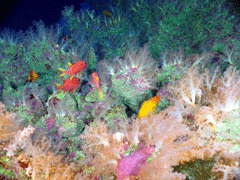
Soft corals and tropical fish share a paradise of habitat on the summit of an underwater volcano in near the Northern Mariana Islands. (Courtesy of the NOAA Submarine Ring of Fire 2004 Exploration and the NOAA Vents Program)
CURWOOD: Now President Bush has a reputation of not being that friendly with environmental concerns. What do you think makes the difference with him when it comes to marine issues?
REICHERT: Well, I think that both he and his wife, Laura Bush, for reasons that are a little bit unknown, have a particular affinity for the ocean environment. There was also strong interested on the part of Jim Connaughton who is the chairman of the Council on Environmental Quality in the White House, who in many respects led a rather long and sometimes lonely battle within the administration to get this done. And he really deserves a lot of credit.
CURWOOD: Tell me why these areas are so important in ecological, geological and biological terms, Josh.

Brown Booby and nest on Maug Island. Seabird populations in the Northern Mariana Islands support regionally important seabird colonies. (Photo: Russell Moffitt, Courtesy of NOAA, Pacific Islands Fisheries Science Center, Coral Reef Ecosystem Division)
CURWOOD: Looking ahead now, the Bush administration is creating this monument, but in fact the Obama administration is really going to have to do the work – I would say on the ground, except in this case, I guess, you know, in the ocean, to get all this done. And the woman who’s going to be running the National Oceanic and Atmospheric Administration has had a close relationship with your organization. How well do you think that Jane Lubchenco and the Obama administration will be able to put this monument into action?

Yellow Tang near Maug Island in the Mariana Archipelago. Photo: Robert Schroeder, Courtesy of NOAA, Pacific Islands Fisheries Science Center, Coral Reef Ecosystem Division)
CURWOOD: How optimistic are you that the Obama administration will do what you think is necessary for this?
REICHERT: I think the jury is out on that. I don’t have any doubt that the people who are going to be coming into this administration are going to want to make this happen. There are fiscal constraints that the Obama people are going to have to be living with that are going to make a lot of things much more difficult to do than they would have been some years ago. So we’ll just have to see. Obviously we will try very hard to make sure that the next administration frees up the resources that are needed in order to make these monuments work.
CURWOOD: Josh Reichert is managing director of the Pew Environment Group. Thank you so much, sir.
REICHERT: Thank you, Steve
[Bombay Dub Orchestra “Greenish Blue” from 3 Cities (Six Degrees Records 2008)]
Related link:
Pew Environment Group's work in the Northern Mariana Islands
Bringing Money Down to Earth

CURWOOD: As America considers ways to pick up the pieces of our smashed up economy, a former venture capitalist suggests that fast money helped to derail it. Woody Tasch says any fix must include slow money-- investments and returns at the pace of sustainable business development.
For slow money think slow food. The slow food movement pushes healthy, sustainable local food, in contrast to fast food that mostly comes frozen on a truck, and takes profits out of communities. Woody Tasch is chairman of Investor's Circle, a network of sustainable investors and author of the new book, "Inquiries into the Nature of Slow Money: Investing as if Food, Farms, and Fertility Mattered”.
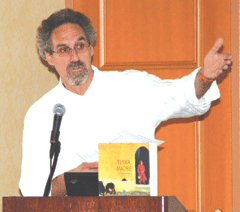
Slow Money guru Woody Tasch. (Photo: Patty Kestin)
CURWOOD: How slow are we talking about here? I mean, what’s the rate of return on this kind of investment?
TASCH: Five percent. The approach here is to go squarely at the gap between philanthropy and venture capital, which is a gap which leaves tens of thousands of small local first sustainable enterprises without access to risk capital. And there are actually tens of thousands of these enterprises all across the United States, businesses like the White Dog café in Philadelphia or Butterworks Farm up in Vermont. Cow Girl Creamery in California. Wholesome Harvest in Iowa. So a whole host of small food enterprises that are not in business to try to become global corporations, but are in business to create thriving, profitable small enterprises that enrich their communities and leave the planet better for future generations.
CURWOOD: So, venture capital, and that’s the business that you used to be in, you would get –what, 20 or 30 percent return?
TASCH: Well, the venture capitalist shoots for you know five or ten times his or her money if a few years. So the actual rates of return are phenomenal when you do the arithmetic they can be 100 percent, 200 percent, 500 percent.
CURWOOD: There’s a point in your book when you talk about what venture capitalists told you in response to various sustainability proposals that you brought to them over the years. I’d like to tick off a few. “I have a moral obligation to my investors to minimize risk and maximize returns.” “It won’t be big enough.” There’s another that says, “I want to live in a community that has ten companies with a hundred employees each, but I want to invest in a company that has a thousand employees for that one company.” How do you change that way of thinking?
TASCH: It’s not easy. [Laugh] I sometimes ask investors to ponder the following question. What would the world be like if we invested 50 percent of our assets within 50 miles of where we lived? And when you say that to a group of investors, you get a blank look at first, and then maybe a chuckle or two, and then they say, “of course, that’s ridiculous, what a stupid question.” And then it starts percolating a little bit and they begin registering how profoundly disconnected their lives as citizens are from their lives as investors. Investing is all about sending your money into markets, into cyberspace, into complex intermediation. And the fact that at the same time, the places where we live are being degraded, this is a very basic disconnect.

TASCH: Sure, Steve. It is deeply disturbing to stand at the edges at such extreme wealth, such extreme speculation, even when it’s successful, and peer into the expanses of such unrelenting poverty. Poverty of abandoned building and abandoned village and field abandoned to mall. Poverty of slum and ghetto. Poverty of pollution. Poverty of congestion and sprawl. Poverty of cheapess and impermanence. Poverty of gated community and security system. Poverty as if ordained by an invisible hand. Poverty of the devalued and the overvalued. Poverty of entire populations who produce little but consume much. Poverty of the near and the real overtaken by the distant and the virtual. Poverty of empty calorie and long shelf life. Poverty of plastic. Poverty of divorce and displacement. Poverty of erosion. Poverty of proliferating portfolios. Poverty of market mania. Poverty of irrational exuberance. Poverty of affluence.
CURWOOD: Thank you.
TASCH: When I talk about the poverty of affluence, I don’t mean to say by any means that, you know, economic growth and financial wealth is quote “evil” unquote. I think a very strong case can be made that from 1900 to 2000, if we just take some arbitrary dates, technology and economic growth were drivers of tremendous progress and increased standards of living and longer life expectancy in many parts of the planet. However, we’re now not between 1900 and 2000. We are in a new century. And the problems we’re facing right now do require a much more nuanced approach to the issue of financial wealth. And we don’t have time to continue chasing maximum economic growth and assuming that all the other problems will be taken care of with the wealth that we’ve created. It’s that even in the midst of affluence – in the midst of the beneficiaries of the greatest legal accumulation of wealth in the history - those words came from a venture capitalist – in the midst of all that, there is tremendous social unease. So I would just keep repeating the mantra slow, small and local. That does not mean non urgent or trivial or parochial. It means things that make commonsense, that connect people in real and tangible and durable ways and create relationships that long-term wealth can be built on.
CURWOOD: Woody Tasch is the author of the new book “Inquiries into the Nature of Slow Money: Investing as if Food Farms and Fertility Mattered.” Thank you so much, Sir.
TASCH: My pleasure Steve, thanks.
Related link:
For more on Woody Tasch’s book “Inquiries into the Nature of Slow Money,” click here
[Brian Eno/David Byrne “Everything That Happens from Everything That Happens Will Happen Today (Todomundo Records 2008)]
Along Came a Spider
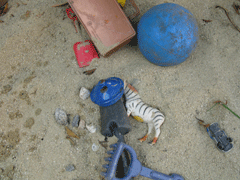
(Photo: Sara Harris)
CURWOOD: Reporter Sara Harris lives in Southern California, where the weather is perfect not only for humans but for many species of eight-legged critters too. So Sara usually checks her garden shoes before she puts them on. Until one day, she forgot.
SARA HARRIS: Are you afraid of spiders? I am. My family shares our home with the Western black widow. No one seems more comfortable with that than my three-year-old, Minerva.
MINERVA HARRIS: I saw one black widow on the stairs, and another black widow in the corner next to my toy kitchen, under the rock.
SARA HARRIS: You see the one I killed? [smash] It’s right here.
MINERVA HARRIS: Wow, she has eight legs!
[SOUND OF DOOR, STEPS…]
SARA HARRIS: Last August, I’d been out of town for weeks, caring for my father after a serious accident. I came back to Los Angeles just in time to start my first week of graduate school. My garden shoes had been sitting there all summer, but I forgot to look before I slipped my feet into them.
It felt like a little prick. I pulled my foot out and shook the shoe. Out tumbled a shiny, black, bulbous spindly spider with a huge belly.
Argh, this is my first day of school.
I flipped the spider over, and there was the red hourglass marking.

Reporter Sara Harris’ spider bite. (Photo: Sara Harris)
While I’m on hold with the hospital, I examine the OSHA fact sheet about black widow bites.
Symptoms may include nausea, tremors, labored breathing, increased blood pressure and fever. Pain lasts 8-12 hours. Apply ice to slow absorption of the venom.
I thought, “This isn’t so bad.”
When I arrived at the hospital, they’d run out of ice. I thought, venom, venom, venom.
By the time I saw the doctor I was feeling really queasy. He explained the hospital had antivenin but it’s expensive, and they reserve it for the worst reactions.
He said that when the pain arrived, even opiates were not going to help. He gave me some anti-convulsant and he sent me home.
What happened next, I can only compare with childbirth. Everything below my neck felt like it was on fire. It lasted for 36 hours. Then, for three more weeks, my foot would swell and itch and throb.
But when the symptoms went away, something else remained.
It’s like a third eye. It will pull my attention toward cracks, like a crevice between a wall and a toy shelf.
And sure enough, every time now, I will find a shiny, bulbous, black spider. I’ve stopped killing them, mindful of the message I am sending to Minerva.
SARA HARRIS: I know there are other ones here. If I let myself concentrate, I know where they are but I don’t want to think about it, because I don’t want to scare you! Are you scared?
MINERVA HARRIS: No. I see where the holes are. I see where they live. See?
SARA HARRIS: And what do you do when you see their holes?
MINERVA HARRIS: I get my shovel, and I whack!
SARA HARRIS: Wrong answer. You call me or Papa and you don’t go near. Ok?
SARA HARRIS: Brent Karner is an entomologist at the Museum of Natural History in Los Angeles. He says that Minerva is big enough and strong enough that the black widow bite wouldn’t kill her.
KARNER: At three, she’s probably already big enough to deal with this better. I would worry more about a child one year or under.
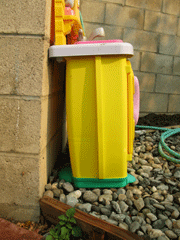
Reporter Sara Harris has found black widows in her daughter Minerva's play kitchen. (Photo: Sara Harris)
KARNER: A healthy respect is good to have for any animal…Look at the black widow the same way. Respect it, don’t grab it. But don’t run away from it because there is a lot of joy in just being able to observe it in the first place. And they are part of the magnificent world around us.
SARA HARRIS: The magnificent world. Maybe I will get there, someday, but for now, my foot still throbs and itches when I pass the place where I slipped it into my shoe that summer afternoon.
For Living on Earth I’m Sara Harris.
CURWOOD: For more about black widow spiders, visit our website: www.loe.org
[Ashbury Heights “Spiders” from Morningstar in a Black Car (Out Of Line/Finetunes 2008)]
Living on Earth wants to hear from you!
Living on Earth
62 Calef Highway, Suite 212
Lee, NH 03861
Telephone: 617-287-4121
E-mail: comments@loe.org
Newsletter [Click here]
Donate to Living on Earth!
Living on Earth is an independent media program and relies entirely on contributions from listeners and institutions supporting public service. Please donate now to preserve an independent environmental voice.
NewsletterLiving on Earth offers a weekly delivery of the show's rundown to your mailbox. Sign up for our newsletter today!
 Sailors For The Sea: Be the change you want to sea.
Sailors For The Sea: Be the change you want to sea.
 The Grantham Foundation for the Protection of the Environment: Committed to protecting and improving the health of the global environment.
The Grantham Foundation for the Protection of the Environment: Committed to protecting and improving the health of the global environment.
 Contribute to Living on Earth and receive, as our gift to you, an archival print of one of Mark Seth Lender's extraordinary wildlife photographs. Follow the link to see Mark's current collection of photographs.
Contribute to Living on Earth and receive, as our gift to you, an archival print of one of Mark Seth Lender's extraordinary wildlife photographs. Follow the link to see Mark's current collection of photographs.
 Buy a signed copy of Mark Seth Lender's book Smeagull the Seagull & support Living on Earth
Buy a signed copy of Mark Seth Lender's book Smeagull the Seagull & support Living on Earth

